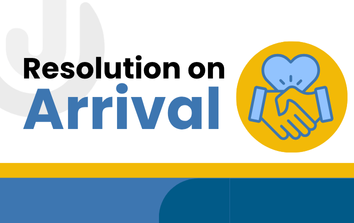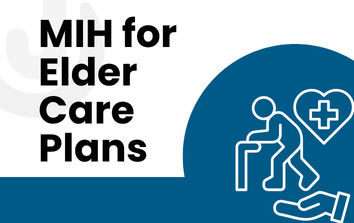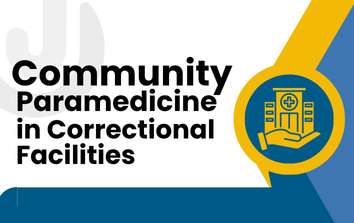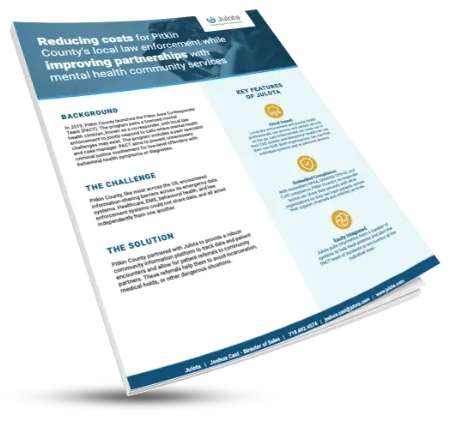The COVID-19 pandemic has led to a startling rise in mental health emergencies. EMS agencies and paramedics are questioning where they fit in the mental health response. Should EMS response to mental health calls lead the way?.
Psychiatric emergencies affect more than just EMS; these problems affect hospitals, police departments, and mental health institutions.
As we explore the complexities of these issues, we will discuss each system’s role in responding to mental health calls. Then, we outline several ways EMS can improve the care provided to mental health patients.
The EMS Response to Mental Health Calls
To understand the best place for EMS in a mental health call, we need to outline how mental health calls happen, how paramedics respond, and how the pressures affect both the patient and the care provider.
Here are the steps in a 911 activated mental health call:
- Patient activation
- EMS response
- EMS treatment
- EMS transport
The sections below explore each of these four phases and how EMS can optimize their response.
Emergency Activation from Mental Health Patient
When someone experiences a mental health emergency, they often do not know where to turn. These patients may have heard about a crisis response team but have forgotten the social worker’s name or the number they should call.
There is one number everyone knows: 9-1-1.
As a result, many patients in crisis will activate the 911 system, triggering EMS and police response.
The problem: Often, there are resources available to those experiencing a mental health crisis – the patients are simply unaware.
The solution: EMS agencies understand that they are often the first contact in a mental health crisis. As a result, ambulance services must integrate resources to treat the source of the patient’s crisis – not just transport them to the ER and repeat.
EMS Response to Mental Health Patient
After the patient activates the emergency system, an ambulance is dispatched to the patient’s location.
The problem: Unfortunately, in an overburdened 911 system, mental health calls are often viewed by EMTs as an endless cycle. Most times the mental health patient is brought to the Emergency Department only to be released a short time later.
The solution: EMS companies need to provide training to their staff to help them understand how to respond to mental health calls and see that these calls are essential. Second, EMS needs to coordinate their response with community paramedics and mobile crisis teams. Third, EMS needs a larger budget allocation to maintain trained clinicians on their staff.
EMS Treatment of Mental Health Patient
When an ambulance arrives at the scene of the patient, they are often accompanied by the fire department and police officers.
The problem: A large group of people walking into a patient’s home is not comforting to someone in a mental health crisis. The presence of police officers often increases the patients’ anxiety and closes them off from being entirely truthful.
The solution: EMS agencies should be cautious in approaching a patient experiencing a mental health crisis. Ideally, the EMS agency can send in a trained mental health professional to deescalate the situation and devise an appropriate care plan.
Transport Decisions for Mental Health Patients
After the paramedics and EMTs have determined the patient’s complaint, they often begin urging the patient to accept transport to the emergency department.
The problem: Transporting a mental health patient to an emergency department is sometimes warranted. However, an ambulance crew has no alternatives, even if the patient could be triaged to a more appropriate destination.
The solution: EMS agencies should discuss alternative transport destinations for their mental health patients. Suppose a medical director can outline a protocol for alternative destinations. Then, the EMS crew will have a practical framework to determine where to transport a mental health patient. EMS will need to work with law enforcement and mental health clinics to accomplish this goal.
Community Response to Mental Health Emergencies
Now, let us look at some of the other organizations that respond to mental health calls. Though many of these organizations are more suited to respond to mental health emergencies, the patient often does not know about them or defaults to calling 911 when trouble arises. With a coordinated community response, 911 can direct the proper team to respond.
Here are several non-EMS mental health responders:
Let us look at each of these in more depth.
Crisis Intervention Team Programs for Mental Health Calls
Crisis intervention team (CIT) programs work to create more cohesive responses to mental health patients. CIT international seeks to foster five things.
Here are the five legs to the CIT chair:
- Police training
- Community collaboration
- Vibrant and Accessible Program
- Behavioral Health Staff Training
- Family, Consumers, and Educator collaboration
Focusing on these five principles, CIT works toward a better response to mental health calls.
Co-Responder Programs for Mental Health Calls
Co-responder programs focus on pairing police officers with mental health professionals.
Co-responder programs will respond to the mental health patient, offering screening for their current crisis, resources for the future, and transport to a clinic if needed.
Co-responder programs also focus on following up with past patients, ensuring that no one feels stranded.
Mobile Crisis Teams for Mental Health Calls
A Mobile Crisis Team in Miami-Dade County, Florida, strives to respond to mental health crises within 60 minutes. Once the team arrives at the location, the trained staff can triage, evaluate, provide resources, and coordinate transport when necessary.
Unlike most ambulance crews, these teams are trained specifically for mental health crises.
Mobile Crisis Teams’ primary goal is to fight against long-term psychological damage.
The Mental Health Response Dilemma
In many areas, there are resources available to people having a mental health crisis. Naturally, the patients would like to connect with these services; however, they often do not feel they can wait for the team to respond or know the number to call.
Most patients see 911 as an immediate solution to their problems. So, if I call 911, help will be here soon.
Through increased education, we can help patients reach out to other resources during an emergency. However, it is unlikely that people will ever stop viewing 911 as a quick fix in time of need.
Fortunately, there is a model that can help solve this problem, combining the immediacy of 911 with the skill and precision of a Mobile Crisis Team.
Mobile Integrated Healthcare Improves Responses to the Mental Health Patient
The heavy presence of law enforcement in co-responder programs can lead to patient anxiety, and Mobile Crisis Teams are often difficult for the patient to reach.
What is the answer?
EMS is the default responder for most mental health calls. As a result, it makes sense that EMS would spearhead the mental health response.
Here are three steps EMS can take in initiating a cohesive response to mental health calls:
- Incorporating a community-based response
- Providing more training to current EMTs and paramedics
- Using an intuitive framework to connect with other members of the response
Let us look at these steps in more depth.
Incorporating a Community Based Response
EMS agencies must move away from the load-and-go, only-transport-to-the-ER mindset to treat a mental health patient effectively.
As insurance companies and Medicare begin providing more reimbursement for patient care rather than transport to the ER, EMS agencies see the value of a multi-faceted community response.
For instance, community paramedic programs allow EMS agencies to treat the patient at the scene. This way, paramedics and EMTs can then consider transport to alternative destinations (mental health clinics, urgent cares, etc.).
If more EMS agencies adopted the community paramedic program, they would be much better suited to provide a tailored response to mental health calls.
Provide more Mental Health Training to EMTs and Paramedics
EMTs and paramedics often grow to resent mental health-related calls. Why? As this study shows, the simple reason is that many paramedics do not feel that mental health calls are what they signed up for. Many feel that they signed up for physical emergencies and not mental health emergencies.
EMS agencies need to provide their employees with adequate mental health training to help EMTs and paramedics address this issue. Moreover, this training needs to explain that responding to mental health calls is an integral part of their job.
EMTs and paramedics are the most compassionate and empathetic people you will ever meet. Properly train them on mental health and they can be the spearhead of mental health-related calls.
Also, EMS and local healthcare systems need to work together to ensure that adequate resources are available to meet the community’s needs.
Use a Platform that Allows Different Departments to Connect
Suppose paramedics, mobile response teams, and hospitals are all on the same page. In that case, we can initiate a more robust response to mental health calls.
Unfortunately, patients are not the only ones unaware of the mental health services available in their area. Often, EMS agencies are in the dark about the resources available to these patients.
How can we expect mental health patients to get the care they need if organizations cannot communicate?
A football team cannot win unless each member knows the playbook. Everybody needs to be in the loop for a game to go as planned.
Similarly, police, EMS, and mental health professionals need to be on the same page when responding to mental health incidents.
Julota provides a playbook that seamlessly integrates each member of the team. Julota allows all community partners to read the same map, leading to a patient-centred response that moves in the right direction.
Final Words
EMS is the default when responding to “psych calls” and mental health emergencies. As a result, EMS should seek to get off the sidelines and take an active approach when responding to mental health emergencies.
Julota allows resources in a community to work together, creating a synergy of forces that leads to better patient outcomes.




